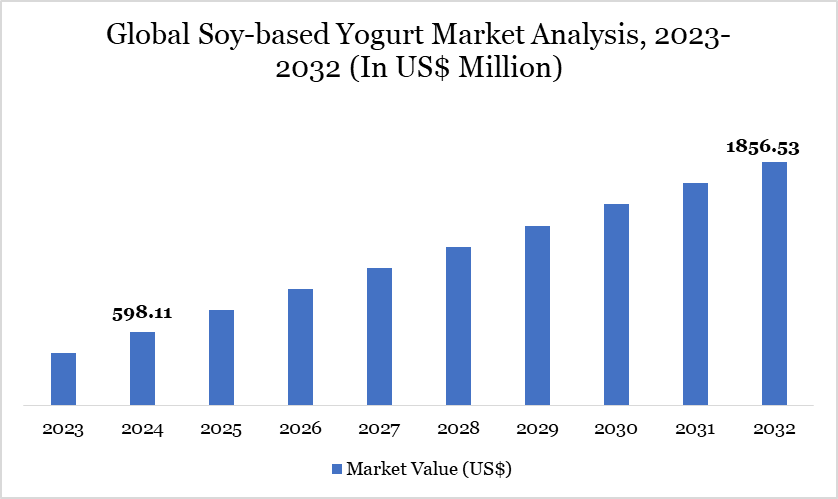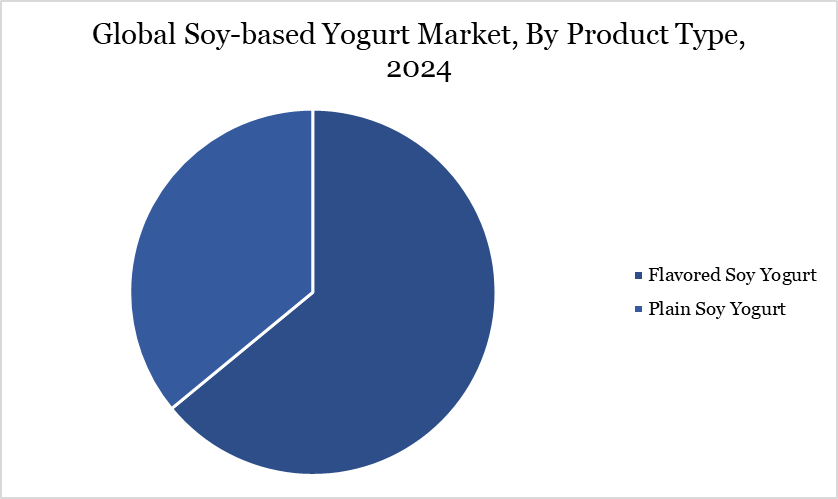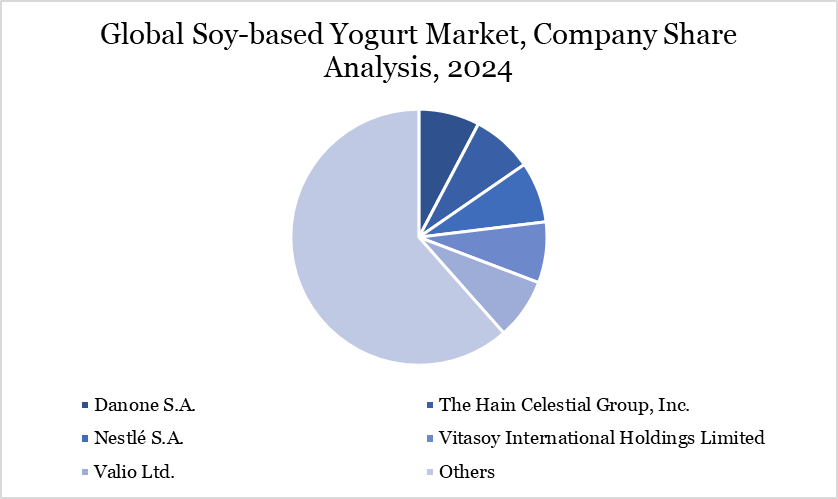Soy-based Yogurt Market Size
Soy-based Yogurt Market Size reached US$ 598.11 million in 2024 and is expected to reach US$ 1856.53 million by 2032, growing with a CAGR of 15.21% during the forecast period 2025-2032.
The global soy-based yogurt market is experiencing steady growth, driven by increased health consciousness and demand for dairy-free alternatives. According to the US Department of Agriculture (USDA), soy milk production grew by over 15% from 2019 to 2023, indicating rising consumer preference for soy-based products. In Europe, the European Commission reports that plant-based dairy alternatives, particularly soy, now account for nearly 10% of the total yogurt market value. These trends are supported by expanding retail distribution and the inclusion of soy yogurt in public health nutrition guidelines.
Soy-based Yogurt Market Trend
A notable trend shaping the market is the integration of soy-based yogurts into institutional and government food programs, especially in North America and parts of Europe. According to USDA school nutrition data, plant-based yogurt options including soy have been increasingly adopted in school meal programs to accommodate lactose-intolerant and vegan students.
Additionally, the Canadian Food Inspection Agency has updated guidelines to ensure proper labeling and fortification of soy yogurts, reflecting regulatory support. This institutional backing, combined with rising allergen awareness, continues to propel the category’s expansion.

For more details on this report – Request for Sample
Market Scope
| Metrics | Details |
| By Product Type | Plain Soy Yogurt, Flavored Soy Yogurt |
| By Form | Spoonable, Drinkable, |
| By Packaging Type | Cups/Tubs, Bottles, Pouches, Others |
| By Distribution Channel | Supermarkets/Hypermarkets, Specialty Stores, Online Channel, and Others |
| By Region | North America, South America, Europe, Asia-Pacific and Middle East and Africa |
| Report Insights Covered | Competitive Landscape Analysis, Company Profile Analysis, Market Size, Share, Growth |
Soy-based Yogurt Market Dynamics
Rising Lactose Intolerance and Dairy Allergy Incidences Fueling Soy-Based Yogurt Adoption
Rising cases of lactose intolerance and dairy allergies are significantly boosting demand for soy-based yogurt globally. According to the National Institutes of Health (NIH), approximately 65% of the global population has a reduced ability to digest lactose after infancy, with higher prevalence in East Asian, African, and Hispanic populations. In the US, the NIH reports that up to 36% of the population is lactose intolerant, creating a strong market for dairy alternatives like soy yogurt. This trend is compelling both mainstream and niche manufacturers to expand soy-based offerings.
Furthermore, the Centers for Disease Control and Prevention (CDC) notes a steady increase in food allergies, including dairy, among children in the US over the past two decades. With cow's milk allergy being the most common food allergy in infants and young children, many parents and institutions are seeking allergen-friendly substitutes. Soy-based yogurt, with its high protein content and creamy texture, serves as a viable alternative for both children and adults. This consumer shift is also influencing school meal programs and hospital dietary guidelines to incorporate plant-based dairy options.
Consumer Perception of Soy as Genetically Modified or Allergen-Associated Ingredient
Consumer perception of soy as a genetically modified and allergen-associated ingredient continues to restrain the growth of the global soy-based yogurt market. According to the USDA Economic Research Service, over 94% of soybeans grown in the US in 2023 were genetically modified, contributing to skepticism among clean-label and organic-focused consumers.
Additionally, the FDA lists soy among the top eight major food allergens, requiring mandatory labeling, which influences purchasing decisions. These concerns have driven some consumers toward almond or oat-based alternatives, despite soy’s nutritional advantages.
Soy-based Yogurt Market Segment Analysis
The global soy-based yogurt market is segmented based on product type, source, packaging type, distribution channel and region.

Flavored Soy Yogurt Segment Driving Soy-based Yogurt Market
The flavored soy yogurt segment is gaining momentum as consumers seek indulgent yet healthy dairy alternatives. According to a survey on retail sales data (2024), flavored plant-based yogurts grew by 18.6% year-over-year in North America, with soy-based options contributing a significant share due to their protein content and lower sugar reformulations.
The Canadian Food Inspection Agency (CFIA) has also reported increased labeling of soy-based flavored yogurts aligning with allergen transparency and flavor diversification. This growth is supported by innovation in tropical, dessert-inspired, and seasonal flavor launches by major brands targeting flexitarian and lactose-intolerant demographics.
Soy-based Yogurt Market Geographical Share
Demand for Soy-based Yogurt Demand in North America
Demand for soy-based yogurt in North America is experiencing steady growth, driven by rising health awareness and lactose intolerance rates. According to the US National Institutes of Health (NIH), approximately 36% of the US population is lactose intolerant, contributing to the shift toward plant-based dairy alternatives like soy yogurt.
The USDA reports that plant-based dairy sales in the US rose by 6.2% in 2023, with soy-based yogurt accounting for a growing share. Companies like Stonyfield Organic and Silk have expanded soy yogurt offerings, citing increased retail demand and consumer preference for protein-rich, dairy-free options.
Sustainability Analysis
Soy-based yogurt is emerging as a sustainable alternative in the dairy segment due to its low environmental footprint. According to the US Department of Agriculture (USDA), soybeans require significantly less water and land than dairy production, with greenhouse gas emissions per kilogram of soy products being over 70% lower than traditional dairy. In 2023, the US Environmental Protection Agency (EPA) highlighted plant-based diets, including soy-based alternatives, as key strategies for reducing national agricultural emissions.
Leading manufacturers, such as Silk (a Danone North America brand), reported reductions of up to 80% in water usage for their soy-based yogurt compared to conventional dairy yogurt. These factors position soy-based yogurt as a viable solution for climate-conscious consumers and eco-friendly product innovation.
Soy-based Yogurt Market Major Players
The major global players in the market include Danone S.A., The Hain Celestial Group, Inc., Nestlé S.A., Vitasoy International Holdings Limited, Valio Ltd., Oatly Group AB, Eden Foods, Inc., Nancy’s Probiotic Foods, Trader Joe’s Company, and Earth’s Own Food Company Inc.

Key Developments
In February 2025, more than 300 Jumbo stores in the Netherlands and Jumbo.com launched three plant-based yogurt varieties based on Dutch soy. The products have been developed and produced by De Nieuwe Melkboer. The introduction of these protein and fiber-rich products, which Jumbo will put on the shelves under its own brand, is unique on this scale and contributes to several sustainability ambitions of the supermarket chain, such as a more plant-based diet, preventing raw material waste and reducing CO2 emissions.
In April 2024, Australian soy product maker King International has unveiled Soy Pro+, a dairy-free yogurt with nutritional protein profiles as it challenges the dairy-free coconut milk alternatives. The new product is sold in Vanilla and Berry flavours in 450 Woolworths stores across Australia.
Why Choose DataM?
Data-Driven Insights: Dive into detailed analyses with granular insights such as pricing, market shares and value chain evaluations, enriched by interviews with industry leaders and disruptors.
Post-Purchase Support and Expert Analyst Consultations: As a valued client, gain direct access to our expert analysts for personalized advice and strategic guidance, tailored to your specific needs and challenges.
White Papers and Case Studies: Benefit quarterly from our in-depth studies related to your purchased titles, tailored to refine your operational and marketing strategies for maximum impact.
Annual Updates on Purchased Reports: As an existing customer, enjoy the privilege of annual updates to your reports, ensuring you stay abreast of the latest market insights and technological advancements. Terms and conditions apply.
Specialized Focus on Emerging Markets: DataM differentiates itself by delivering in-depth, specialized insights specifically for emerging markets, rather than offering generalized geographic overviews. This approach equips our clients with a nuanced understanding and actionable intelligence that are essential for navigating and succeeding in high-growth regions.
Value of DataM Reports: Our reports offer specialized insights tailored to the latest trends and specific business inquiries. This personalized approach provides a deeper, strategic perspective, ensuring you receive the precise information necessary to make informed decisions. These insights complement and go beyond what is typically available in generic databases.
Target Audience 2024
Manufacturers/ Buyers
Industry Investors/Investment Bankers
Research Professionals
Emerging Companies